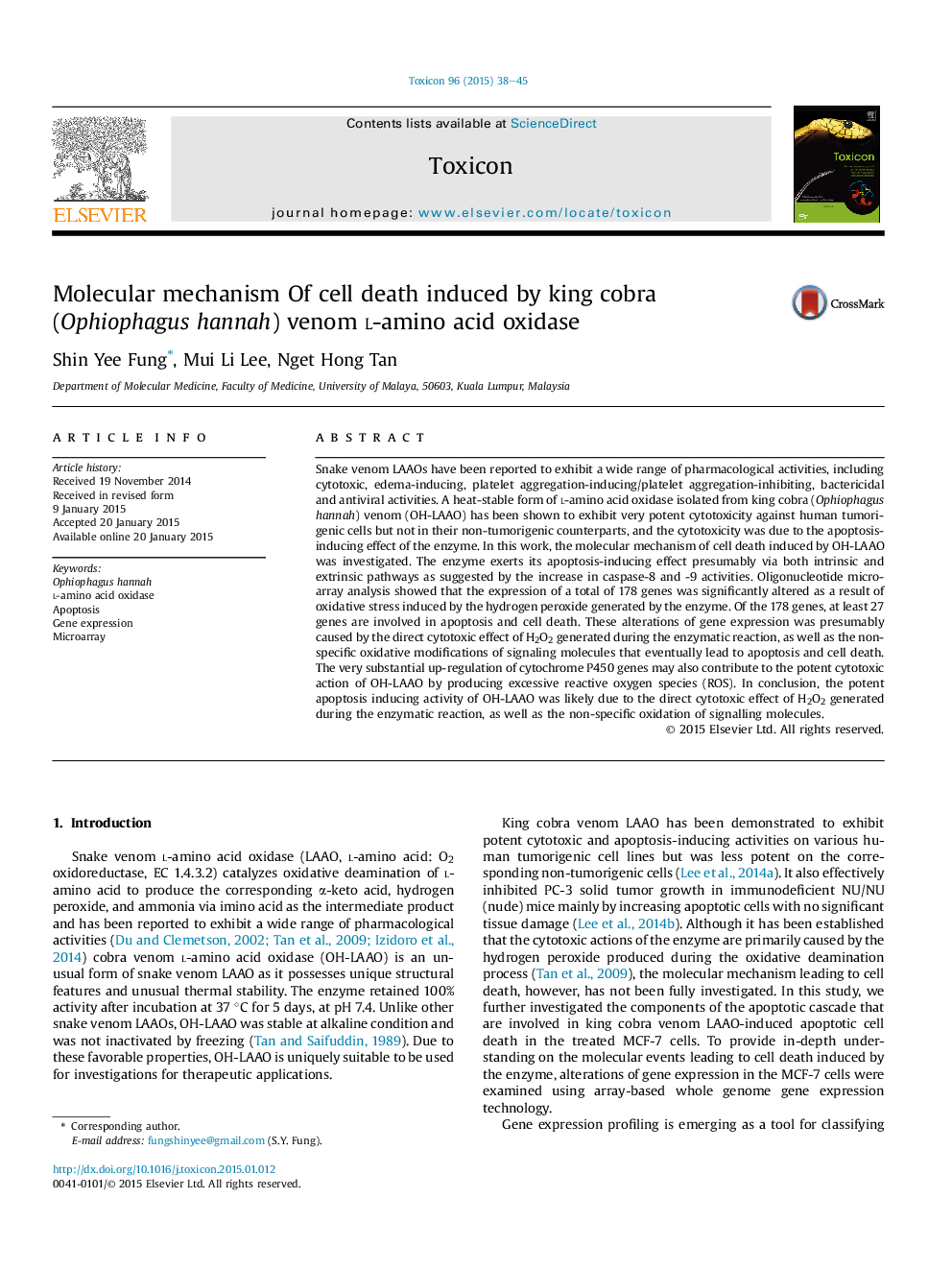| کد مقاله | کد نشریه | سال انتشار | مقاله انگلیسی | نسخه تمام متن |
|---|---|---|---|---|
| 2064496 | 1544139 | 2015 | 8 صفحه PDF | دانلود رایگان |

• OH-LAAO exerts apoptosis-inducing effect via both intrinsic and extrinsic pathways.
• 178 genes was significantly altered including genes of apoptosis and cell death.
• Substantial up-regulation of cytochrome P450 genes.
• Direct cytotoxic effect of H2O2 generated.
• Non-specific oxidation of signaling molecules.
Snake venom LAAOs have been reported to exhibit a wide range of pharmacological activities, including cytotoxic, edema-inducing, platelet aggregation-inducing/platelet aggregation-inhibiting, bactericidal and antiviral activities. A heat-stable form of l-amino acid oxidase isolated from king cobra (Ophiophagus hannah) venom (OH-LAAO) has been shown to exhibit very potent cytotoxicity against human tumorigenic cells but not in their non-tumorigenic counterparts, and the cytotoxicity was due to the apoptosis-inducing effect of the enzyme. In this work, the molecular mechanism of cell death induced by OH-LAAO was investigated. The enzyme exerts its apoptosis-inducing effect presumably via both intrinsic and extrinsic pathways as suggested by the increase in caspase-8 and -9 activities. Oligonucleotide microarray analysis showed that the expression of a total of 178 genes was significantly altered as a result of oxidative stress induced by the hydrogen peroxide generated by the enzyme. Of the 178 genes, at least 27 genes are involved in apoptosis and cell death. These alterations of gene expression was presumably caused by the direct cytotoxic effect of H2O2 generated during the enzymatic reaction, as well as the non-specific oxidative modifications of signaling molecules that eventually lead to apoptosis and cell death. The very substantial up-regulation of cytochrome P450 genes may also contribute to the potent cytotoxic action of OH-LAAO by producing excessive reactive oxygen species (ROS). In conclusion, the potent apoptosis inducing activity of OH-LAAO was likely due to the direct cytotoxic effect of H2O2 generated during the enzymatic reaction, as well as the non-specific oxidation of signalling molecules.
Journal: Toxicon - Volume 96, 15 March 2015, Pages 38–45